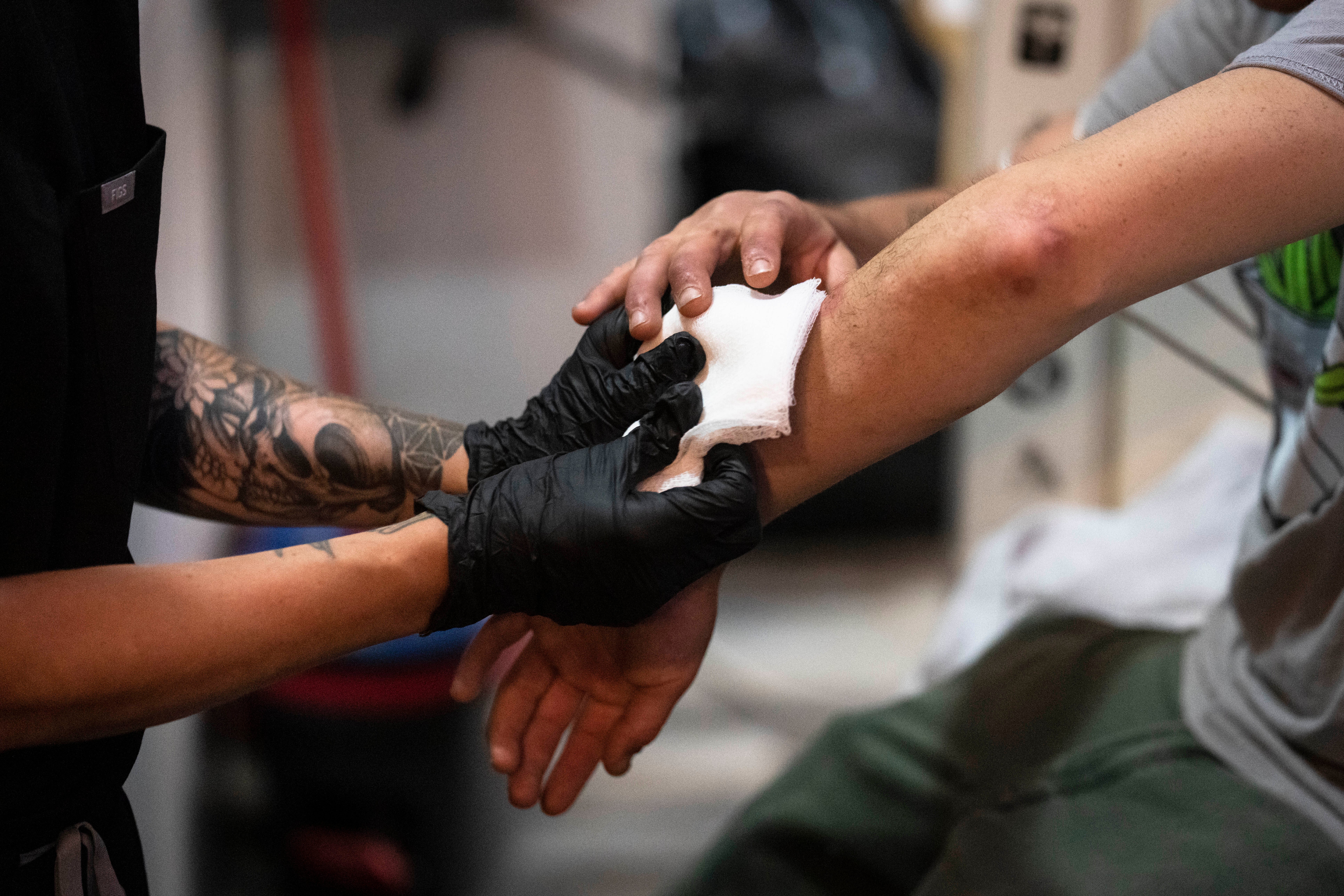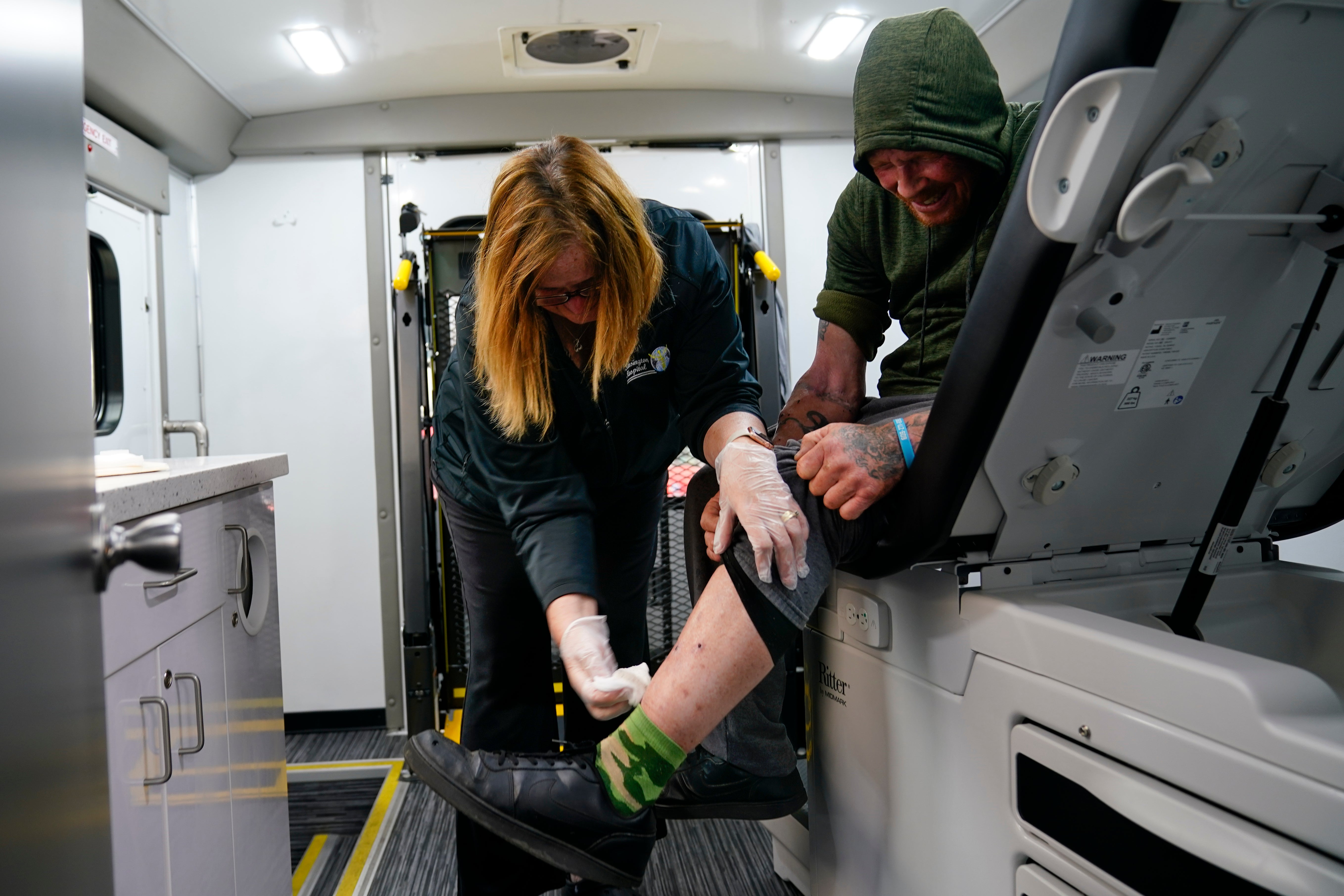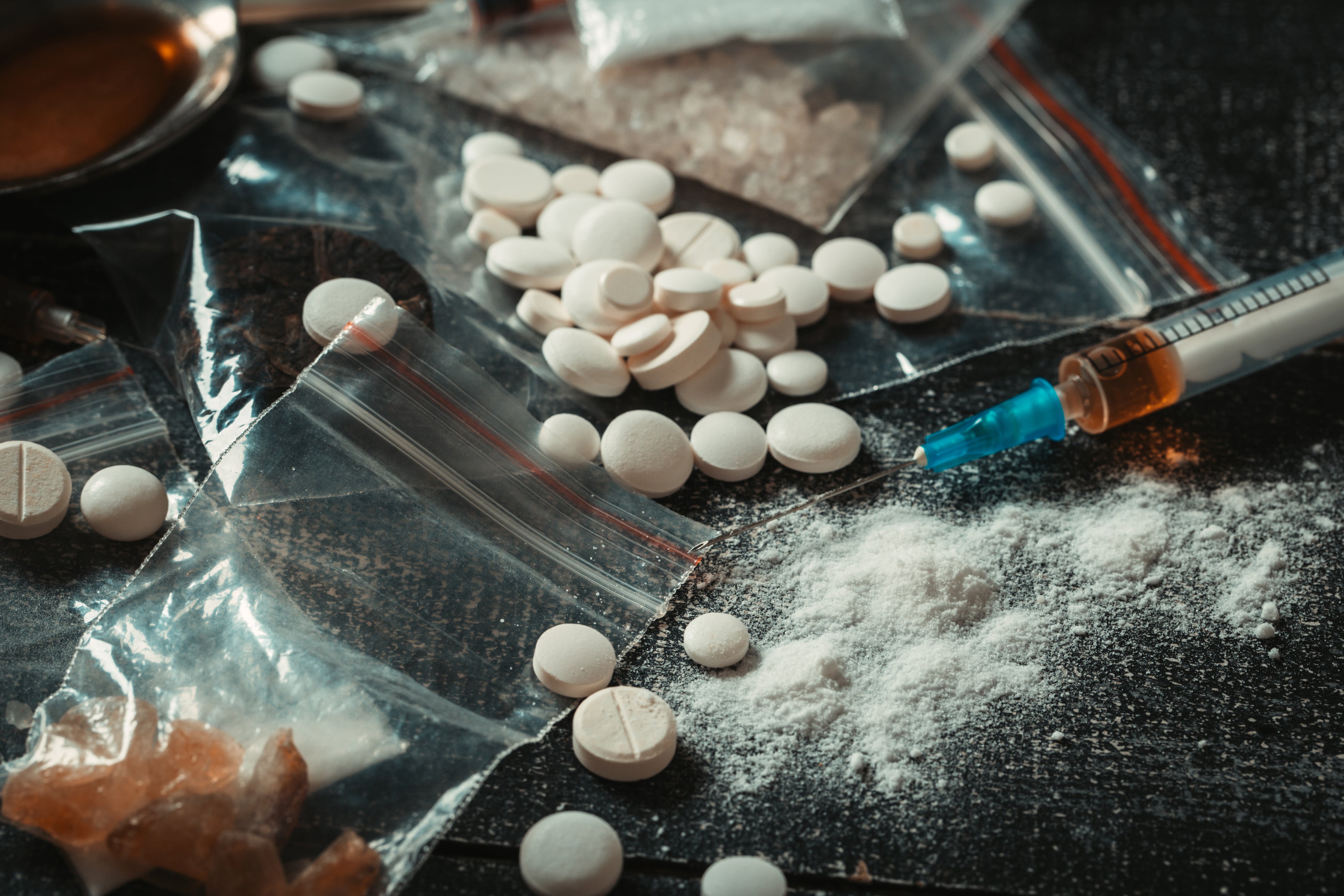Tranq dope: Deadly flesh-eating ‘zombie’ drug already linked to 11 UK deaths
It is feared the arrival of xylazine – which causes necrotic skin ulcers – could drive a US-style drugs crisis
A deadly flesh-eating drug driving a health crisis in the US has infiltrated the UK drugs market and has already been linked to at least 11 deaths, research has found.
Xylazine – a type of animal tranquilliser which has been classed as an “emerging threat” by the White House – causes painful necrotic sores which can lead to amputations and its use can lead to lethal overdose.
In America, it is most frequently used in combination with fentanyl to help better recreate the long-lasting highs experienced by heroin users.

But now it has arrived in Britain after researchers detected the drug in 16 people, and linked it to 11 deaths since it was first connected to the overdose of 43-year-old Karl Warburton from Solihull, West Midlands, in May 2022. His case was the first death outside North America and the first in the UK to be linked to xylazine use.
Worryingly, researchers believe the drug has infiltrated a much wider range of illicit substances in the UK – including cocaine, counterfeit codeine and diazepam (Valium) tablets, and even THC cannabis vapes.
Experts have called for urgent action to improve testing and wider investment in drug treatment initiatives to avert a US-style drug death crisis.
It comes after the Biden administration warned last spring that deaths linked to xylazine had risen elevenfold between 2020 and 2021 in some regions.
Combined with the threat from deadly synthetic opioids called nitazenes which have been linked to 100 UK deaths, experts have called for urgent action to prepare for a growing public health threat.

Senior author Dr Caroline Copeland, from the national programme on substance abuse mortality at King’s College London, said the findings were cause for alarm.
“Until the 2022 death was reported there was only one lab in the UK that was testing for xylazine. But if you are not looking for something you are not going to find it,” she told The Independent.
In the US the powerful sedative – commonly known as “tranq” or “tranq dope” – has been linked to a growing proportion of drug-related deaths and was a factor in 31 per cent of heroin or fentanyl overdose deaths in Philadelphia, Pennsylvania, in 2019.
It is used by vets to tranquilise large animals and can lower the heart and breathing rate to dangerous levels as well as causing large patches of rotting flesh when injected.
Dr Copeland warned some people suffering the chronic skin ulcers caused by the drug limiting blood supply to the extremities – commonly the legs – have had to have limbs amputated.
However British labs are also detecting xylazine in different types of illegal drugs, including cannabis vapes.
She added: “It’s extremely concerning. The US has declared it an emerging threat and we are seeing it here as well and in wider circulation than heroin supplies.
“Cannabis is the most widely used illicit substance and it’s being detected in THC vapes. That’s putting potentially a large number of people at risk to its harms.
“Its acute harms of overdose are awful but its chronic harms of skin ulcers is a completely separate chronic public health disaster that could happen.”
Calling for urgent action to avert a crisis, she called for better testing to ensure drug users can identify contaminated supplies.
She said: “There are three simple measures the UK can introduce to prevent the epidemic of xylazine use that has emerged in the USA.
“Cheap xylazine test strips should be made available, healthcare providers need to be aware of the signs that chronic skin ulcers are due to xylazine use, and pathologists and coroners should specifically request toxicology testing for xylazine in relevant cases to understand the true prevalence of the drug.”

The research comes after The Independent previously revealed the potent synthetic opioids called nitazenes – some of which are 500 times stronger than morphine – are also flooding the illegal drug market and have even been detected in Britain’s prisons.
The National Crime Agency believe nitazenes are already behind 100 UK deaths amid constraints in traditional heroin supply routes after the Taliban banned opium production in Afghanistan.
However the drugs, which pose a huge overdose risk due to their potency, are also being found in contaminated tablets sold to unwitting users as counterfeit prescription drugs like Xanax or Valium.
Dr Adam Holland, of the drugs special interest group at the Faculty of Public Health, said: “The emergence of xylazine in the UK drug market, as well as the proliferation of potent synthetic substances including nitazenes and benzodiazepine analogues is extremely concerning.
“As levels of adulteration increase and drug-related deaths mount it becomes even more clear that our punitive drug laws are not reducing harm. We need to expand the range of harm reduction interventions available for people who use drugs, including drug checking and overdose prevention centres, to give them the opportunities they need to stay safe.”
Professor Sir John Strang, head of the addictions department at King’s College London, and who was not involved in the study, said the findings show how research can help inform public response.
“We need to be constantly alert to changes in the nature of the illicit drug market, especially as these changes sometimes bring new health complications or challenges,” he said.
A government spokesperson said: “We are aware of the threat from xylazine and are determined to protect people from the threat posed by this drug and other illicit synthetic drugs.
“We will not hesitate to act to keep the public safe. Following advice from the Advisory Council on the Misuse of Drugs (ACMD), we intend to make xylazine a class-C drug meaning anyone supplying this substance will face up to 14 years in prison, a fine or both.”

